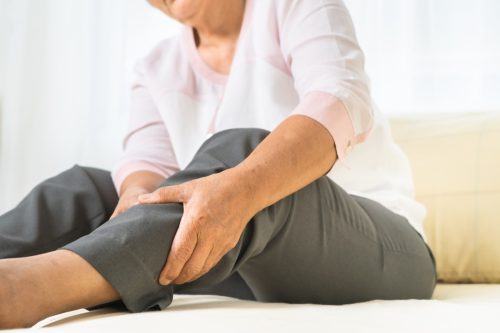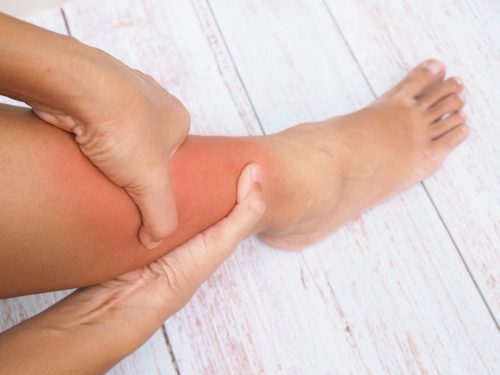Lauren Boebert Hospitalized With Blood Clot Condition—These Are the Symptoms
The congresswoman was diagnosed with a condition called May-Thurner syndrome.

Sometimes a celebrity or public official sharing health news is how we learn about a condition we previously weren't familiar with. That's likely the case for many people hearing about Republican U.S. Representative Lauren Boebert, who went in for emergency surgery at UCHealth Medical Center of the Rockies in Loveland, Colorado, earlier this week. According to a statement her campaign team posted on Facebook, Boebert was admitted due to "severe swelling in her upper left leg." Following a CT scan, doctors identified an "acute blood clot" and diagnosed the congresswoman with May-Thurner syndrome, a condition that affects blood flow.
May-Thurner syndrome occurs when the right iliac artery (the blood vessel that carries blood to the right leg) presses on the left iliac vein (the vessel that carries blood from the left leg back to your heart), according to the Cleveland Clinic. This can make it harder for blood to flow back to your heart, pooling in your legs instead and potentially leading to deep vein thrombosis (DVT), a blood clot in the deep leg veins.
According to her campaign team, Boebert's doctors successfully removed the blood clot and inserted a stent. The congresswoman is expected to make a full recovery. But with the news of her diagnosis, you may be wondering about the symptoms of May-Thurner syndrome. Cleveland Clinic notes that it occurs in about one in five people, but is more common in women and adults between 20 and 50. While many patients don't have any symptoms, there are some you should be on the lookout for. Read on for the tell-tale signs of Boebert's condition.
RELATED: Amy Schumer Shares Diagnosis Amid Concern About Her Changing Face.
1
Feelings of heaviness or pain in the legs

Symptoms of May-Thurner typically only affect the left leg, with one sign being feelings of heaviness or pain, according to the Cleveland Clinic.
2
Swelling

Swelling is also a symptom of May-Thurner syndrome, and it's one that Boebert's campaign team noted in their statement.
RELATED: Selma Blair Reveals the Early MS Sign She Didn't Know Was a Symptom.
3
Varicose veins

Varicose veins can indicate May-Thurner syndrome as well, particularly if you develop them in the upper leg, Health.com says.
According to the Cleveland Clinic, varicose veins are swollen blood vessels just beneath the skin's surface in the lower body. They appear as "blue and purple bulges" on the legs, feet, or ankles.
4
Venous ulcers

Venous ulcers—open sores on the legs that don't heal—are another symptom of May-Thurner syndrome.
RELATED: Christina Applegate Gives Heartbreaking Update on MS Diagnosis: "I Live in Hell."
There are separate symptoms of DVT.

Health officials warn that many people don't realize they have May-Thurner syndrome until they develop DVT, which presents a different set of symptoms. (Boebert's campaign did not disclose whether she was diagnosed with DVT.)
According to the National Blood Clot Alliance, symptoms of DVT include swelling, skin discoloration or redness on the leg, skin that is warm to the touch, and pain or tenderness that isn't caused by an injury. Health.com points out that the pain might feel like a muscle cramping or a Charley horse.
What causes this condition?

Boebert's team noted that the exact cause of May-Thurner syndrome is unknown, but "dehydration, travel, and extended periods of sitting" are potential factors.
Health.com also cites anatomical differences in the position of arteries and veins in the pelvis as a risk factor. These may be present at birth or develop due to pregnancy.
As the true cause is unclear, there's no foolproof way to prevent May-Thurner syndrome, but experts recommend improving circulation to reduce your risk of blood clots. You can do this by avoiding sitting for too long, drinking water, exercising, keeping health conditions under control, quitting smoking, and wearing compression socks (if your doctor recommends doing so), Cleveland Clinic says.
Best Life offers the most up-to-date information from top experts, new research, and health agencies, but our content is not meant to be a substitute for professional guidance. When it comes to the medication you're taking or any other health questions you have, always consult your healthcare provider directly.





















